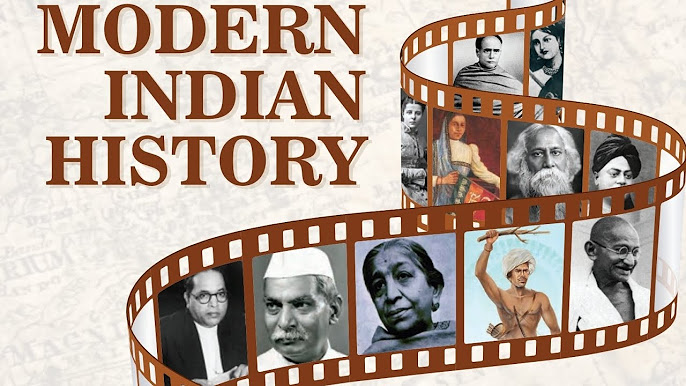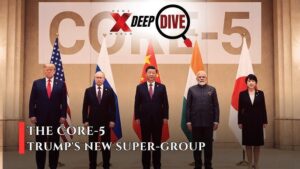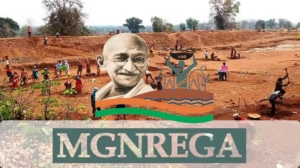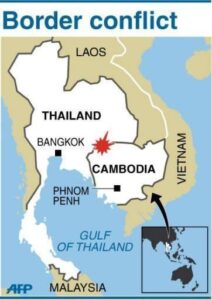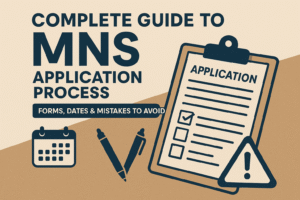Introduction
Modern India: A Comprehensive Overview
Modern India refers to the period in Indian history from 1707 to 1947. This era began with the death of Aurangzeb, the last significant Mughal emperor, and ended with India achieving independence from British rule. It was a period of profound political, social, and cultural transformations that laid the foundation of the modern Indian state.
The Era of the Later Mughals (1707–1857)
The death of Aurangzeb in 1707 marked the beginning of the decline of the Mughal Empire. The central Mughal administration, once a powerful entity, started disintegrating. The later Mughals were largely figureheads, with real power shifting to regional leaders and wazirs. This fragmentation led to the rise of smaller, weaker kingdoms and a lack of centralized control, making the empire vulnerable to external invasions and internal strife.
Notable developments during this period include:
- Emergence of Regional Powers: States such as Hyderabad, Awadh, Bengal, Maratha Confederacy, and Mysore rose to prominence. These regional powers often competed against one another, further weakening the political fabric of India.
- Invasions and Instability: India faced repeated invasions from foreign powers, such as Nadir Shah of Persia in 1739, who plundered Delhi, and Ahmad Shah Durrani, who invaded several times in the mid-18th century.
- European Trading Companies: While Indian powers were engaged in internal conflicts, European trading companies—especially the British East India Company—expanded their influence. The Battle of Plassey (1757) and the Battle of Buxar (1764) established British dominance in Bengal, marking the beginning of colonial rule in India.
The 1857 Revolt, also known as the First War of Independence, marked the culmination of this phase. Although it failed to end British rule, it signaled the end of the Mughal Empire. The British exiled Bahadur Shah Zafar, the last Mughal emperor, to Rangoon, effectively bringing the Mughal dynasty to a close.
India’s Struggle for Independence (1857–1947)
The second phase of Modern India was dominated by the struggle for independence from British colonial rule. This period saw the emergence of new ideas, institutions, and movements that sought to challenge and overthrow colonial authority.
Key aspects of this era include:
1. The Role of Indian National Congress (INC):
Founded in 1885, the INC became the primary platform for Indian aspirations. Initially a moderate organization seeking reforms, the INC gradually evolved into a mass movement demanding complete independence. Leaders like Dadabhai Naoroji, Gopal Krishna Gokhale, and Bal Gangadhar Tilak shaped the early phases of this organization.
2. Mahatma Gandhi’s Leadership:
Mahatma Gandhi emerged as the most influential leader of the freedom struggle. His philosophy of non-violence (Ahimsa) and civil disobedience inspired millions to participate in the national movement. Key movements under his leadership included:
- Non-Cooperation Movement (1920–22): A mass protest against the Rowlatt Act and the Jallianwala Bagh massacre.
- Civil Disobedience Movement (1930): Marked by the historic Salt March, this movement encouraged Indians to defy British laws.
- Quit India Movement (1942): A call for immediate independence, this movement saw widespread protests and demonstrations.
3. Revolutionary Movements:
While Gandhi emphasized non-violence, revolutionary groups like Bhagat Singh, Chandrashekhar Azad, and Subhas Chandra Bose advocated armed resistance. Bose’s Indian National Army (INA) played a significant role in inspiring Indians to fight against British rule.
4. Socio-Religious Reform Movements:
The 19th and early 20th centuries witnessed reform movements aimed at eradicating social evils and promoting education and equality. Reformers like Raja Ram Mohan Roy, Swami Vivekananda, and Jyotirao Phule worked towards a more progressive society, addressing issues like caste discrimination, the condition of women, and illiteracy.
5. World Wars and Their Impact:
India’s participation in World War I and World War II had profound effects. While these wars drained Indian resources, they also exposed Indians to global ideas of liberty and nationalism, intensifying demands for independence.
6. Partition and Independence:
The final years of British rule were marked by intense communal tensions, leading to the partition of India into two nations—India and Pakistan—in 1947. This event was accompanied by widespread violence and the displacement of millions.
Legacy of Modern India
The period from 1707 to 1947 shaped India in profound ways:
- It marked the end of feudal structures and the emergence of a modern state.
- The freedom struggle fostered a sense of unity and national identity among Indians.
- Social reform movements laid the foundation for a more equitable society.
- The legacy of leaders like Mahatma Gandhi and institutions like the INC continues to inspire democratic values in India.
Modern India is not just a story of decline and struggle but also of resilience and transformation. It is a testament to the enduring spirit of a nation that emerged stronger despite centuries of turmoil.
Modern Indian History Timeline
18th Century (1707–1799): The Decline of the Mughals and Rise of Regional Powers
1707:
- Death of Aurangzeb, succeeded by Bahadur Shah I.
- The Mughal Empire began to decline.
- The Maratha Empire split into two divisions (Peshwas and other factions).
1734:
- Pamheiba, king of Manipur, invaded Tripura.
1737:
- Peshwa Bajirao I successfully raided Delhi, displaying Maratha strength.
1740:
- Death of Bajirao I; succeeded by Balaji Bajirao.
1757:
- Battle of Plassey: British East India Company, led by Robert Clive, defeated Nawab Siraj-ud-Daulah, marking the beginning of British dominance in India.
1760:
- Battle of Wandiwash: British defeated the French, establishing their supremacy over European rivals in India.
1761:
- Third Battle of Panipat: Maratha Empire suffered a devastating defeat against Ahmad Shah Abdali, halting its expansion.
1766:
- First Anglo-Mysore War between the British and Hyder Ali of Mysore.
1777–1789:
- Series of Anglo-Maratha and Anglo-Mysore wars, including notable battles like the Battle of Wadgaon (1779) and the Third Anglo-Mysore War (1789).
1799:
- Fourth Anglo-Mysore War: Tipu Sultan died defending Seringapatam, leading to the restoration of the Wodeyar dynasty in Mysore.
19th Century (1800–1857): British Expansion and Social Reforms
1803–1818:
- Anglo-Maratha Wars: Ended with the Third Anglo-Maratha War (1817–1818), resulting in British control over most of India and the dissolution of the Maratha Empire.
1829:
- Prohibition of Sati: Under Governor-General Lord William Bentinck, the practice of Sati was abolished.
1857:
- The Revolt of 1857: Also called the First War of Independence, it marked the culmination of widespread discontent against British rule. Although unsuccessful, it led to the dissolution of the East India Company and direct administration by the British Crown.
Late 19th Century (1858–1900): Social Reforms and National Awakening
1885:
- Formation of the Indian National Congress (INC) in Bombay.
- Bengal Tenancy Act and Bengal Local Self-Government Act were passed.
1891:
- Factory Act: Regulated working conditions in factories.
- Age of Consent Act: Raised the age of consent for marriage for girls.
1899–1905:
- Lord Curzon served as Viceroy of India.
- Notable events include the Partition of Bengal (1905) and the launch of the Swadeshi Movement as a response.
Early 20th Century (1905–1919): Nationalist Movements Gain Momentum
1906:
- Formation of the All-India Muslim League in Dacca.
- The INC declared the aim of achieving Swaraj (self-rule).
1909:
- Morley-Minto Reforms: Introduced limited reforms, such as separate electorates for Muslims.
1911:
- Partition of Bengal annulled.
- Capital shifted from Calcutta to Delhi.
1919:
- Rowlatt Act: Introduced repressive laws, sparking protests.
- Jallianwala Bagh Massacre: British troops fired on unarmed civilians, killing hundreds.
- Montague-Chelmsford Reforms: Introduced dyarchy in provincial governments.
1920–1947: India’s Struggle for Independence
1920–1922:
- Non-Cooperation Movement: Led by Mahatma Gandhi, it boycotted British goods, schools, and institutions.
1927:
- Appointment of the Simon Commission to review the Government of India Act, sparking protests due to its exclusion of Indians.
1929:
- Poorna Swaraj Resolution: Adopted at the INC session in Lahore, declaring complete independence as India’s goal.
1930:
- Civil Disobedience Movement: Initiated with the Dandi March to protest the salt tax.
- The First Round Table Conference held in London.
1935:
- Government of India Act, 1935: Provided for provincial autonomy and laid the groundwork for future governance structures.
1942:
- Quit India Movement: Launched by Gandhi, calling for an immediate end to British rule.
1946:
- Cabinet Mission: Proposed plans for India’s independence, leading to the formation of an Interim Government.
1947:
- Indian Independence Act: Partitioned India into two dominions, India and Pakistan.
- Jawaharlal Nehru became the first Prime Minister of independent India
Lorem ipsum dolor sit amet, consectetur adipiscing elit. Ut elit tellus, luctus nec ullamcorper mattis, pulvinar dapibus leo.Lorem ipsum dolor sit amet, consectetur adipiscing elit. Ut elit tellus, luctus nec ullamcorper mattis, pulvinar dapibus leo.Lorem ipsum dolor sit amet, consectetur adipiscing elit. Ut elit tellus, luctus nec ullamcorper mattis, pulvinar dapibus leo.
Advent of the Europeans in India
India’s interaction with Europe dates back to ancient times through overland trade routes. This exchange enriched both civilizations culturally and materially. However, the discovery of the sea route to India by European powers in the late 15th century had profound and far-reaching consequences for Indian society and history.
The arrival of European traders—first the Portuguese, followed by the Dutch, British, and French—marked the beginning of a transformative period. While initially focused on trade, these powers gradually developed aspirations to dominate politically. Of all the Europeans, the British succeeded in establishing political control over India, ushering in a colonial era that lasted until the mid-20th century.
During these four centuries, India transitioned from a feudal, conservative, and exclusive social structure to a more progressive, capitalistic, and inclusive one. This transformation was influenced by both internal introspection and external ideas such as liberty, equality, fraternity, and democracy, which replaced the monarchy-dominated system.
Despite foreign domination from 1757 to 1947, India resisted attempts to obliterate its rich cultural heritage and pluralistic values. The interplay of continuity and change defined this era, showcasing India’s resilience against external pressures while adopting new ideas.
Global Context and the European Exploration
Several factors in Europe catalyzed the advent of European powers in India:
- Emergence of Nation-States: Unified political entities with ambitions to expand their wealth and influence.
- Renaissance and Reformation: Intellectual and cultural awakening spurred exploration and innovation.
- Agricultural and Industrial Revolutions: Increased production created a demand for trade.
- Mercantilism: The economic doctrine emphasized acquiring wealth through trade.
- Technological Advances: Innovations in navigation, such as the compass, enabled long voyages.
The discovery of the sea route to India via the Cape of Good Hope by Vasco da Gama in 1498 marked the beginning of European maritime dominance. Spices, a highly sought-after commodity in Europe, became the primary driver for establishing trade routes to the East. Over time, European rivalries turned India into a battleground for control, especially during the 18th century.
The Portuguese
Arrival and Early Expansion:
- Vasco da Gama landed in Calicut in 1498, establishing the first direct sea route between Europe and India.
- In 1503, Francisco de Almeida became the first governor and viceroy of Portuguese territories in India.
- The Cartaz System, requiring naval trade passes for ships, was introduced to control maritime trade.
Key Figures and Developments:
- Alfonso de Albuquerque, the second governor, expanded Portuguese power, capturing Goa in 1510. Goa became the center of Portuguese authority in India.
- Other significant settlements included Cochin, Cannanore, Diu, Daman, Salsette, Bassein, Chaul, Bombay, and Hooghly.
Decline:
- By the late 16th century, Portuguese dominance waned due to competition from other European powers, internal corruption, and administrative inefficiency.
The Dutch
Entry into India:
- The Dutch East India Company (VOC) was established in 1602 with a charter granting it the power to wage wars and sign treaties.
- They focused on monopolizing the spice trade in the East Indies (modern-day Indonesia).
Major Settlements:
- Factories were established in Masulipatnam, Pulicat, Surat, Chinsura, Kasimbazar, Baran, Patna, Balasore, Negapatnam, and Cochin.
- Pulicat served as the Dutch headquarters in India.
Rise and Fall:
- The Dutch replaced the Portuguese as the dominant trading power in the East in the 17th century.
- Their power began to decline in the 18th century due to increased competition from the British and French.
- The defeat of the Dutch by the English in the Battle of Bedara (1759) marked the end of their influence in India.
Lorem ipsum dolor sit amet, consectetur adipiscing elit. Ut elit tellus, luctus nec ullamcorper mattis, pulvinar dapibus leo.Lorem ipsum dolor sit amet, consectetur adipiscing elit. Ut elit tellus, luctus nec ullamcorper mattis, pulvinar dapibus leo.Lorem ipsum dolor sit amet, consectetur adipiscing elit. Ut elit tellus, luctus nec ullamcorper mattis, pulvinar dapibus leo.
Lorem ipsum dolor sit amet, consectetur adipiscing elit. Ut elit tellus, luctus nec ullamcorper mattis, pulvinar dapibus leo.Lorem ipsum dolor sit amet, consectetur adipiscing elit. Ut elit tellus, luctus nec ullamcorper mattis, pulvinar dapibus leo.Lorem ipsum dolor sit amet, consectetur adipiscing elit. Ut elit tellus, luctus nec ullamcorper mattis, pulvinar dapibus leo.
Lorem ipsum dolor sit amet, consectetur adipiscing elit. Ut elit tellus, luctus nec ullamcorper mattis, pulvinar dapibus leo.Lorem ipsum dolor sit amet, consectetur adipiscing elit. Ut elit tellus, luctus nec ullamcorper mattis, pulvinar dapibus leo.Lorem ipsum dolor sit amet, consectetur adipiscing elit. Ut elit tellus, luctus nec ullamcorper mattis, pulvinar dapibus leo.
Lorem ipsum dolor sit amet, consectetur adipiscing elit. Ut elit tellus, luctus nec ullamcorper mattis, pulvinar dapibus leo.
Lorem ipsum dolor sit amet, consectetur adipiscing elit. Ut elit tellus, luctus nec ullamcorper mattis, pulvinar dapibus leo.Lorem ipsum dolor sit amet, consectetur adipiscing elit. Ut elit tellus, luctus nec ullamcorper mattis, pulvinar dapibus leo.Lorem ipsum dolor sit amet, consectetur adipiscing elit. Ut elit tellus, luctus nec ullamcorper mattis, pulvinar dapibus leo.
Lorem ipsum dolor sit amet, consectetur adipiscing elit. Ut elit tellus, luctus nec ullamcorper mattis, pulvinar dapibus leo.Lorem ipsum dolor sit amet, consectetur adipiscing elit. Ut elit tellus, luctus nec ullamcorper mattis, pulvinar dapibus leo.Lorem ipsum dolor sit amet, consectetur adipiscing elit. Ut elit tellus, luctus nec ullamcorper mattis, pulvinar dapibus leo.
Lorem ipsum dolor sit amet, consectetur adipiscing elit. Ut elit tellus, luctus nec ullamcorper mattis, pulvinar dapibus leo.Lorem ipsum dolor sit amet, consectetur adipiscing elit. Ut elit tellus, luctus nec ullamcorper mattis, pulvinar dapibus leo.Lorem ipsum dolor sit amet, consectetur adipiscing elit. Ut elit tellus, luctus nec ullamcorper mattis, pulvinar dapibus leo.
Lorem ipsum dolor sit amet, consectetur adipiscing elit. Ut elit tellus, luctus nec ullamcorper mattis, pulvinar dapibus leo.Lorem ipsum dolor sit amet, consectetur adipiscing elit. Ut elit tellus, luctus nec ullamcorper mattis, pulvinar dapibus leo.Lorem ipsum dolor sit amet, consectetur adipiscing elit. Ut elit tellus, luctus nec ullamcorper mattis, pulvinar dapibus leo.
Lorem ipsum dolor sit amet, consectetur adipiscing elit. Ut elit tellus, luctus nec ullamcorper mattis, pulvinar dapibus leo.Lorem ipsum dolor sit amet, consectetur adipiscing elit. Ut elit tellus, luctus nec ullamcorper mattis, pulvinar dapibus leo.Lorem ipsum dolor sit amet, consectetur adipiscing elit. Ut elit tellus, luctus nec ullamcorper mattis, pulvinar dapibus leo.
Lorem ipsum dolor sit amet, consectetur adipiscing elit. Ut elit tellus, luctus nec ullamcorper mattis, pulvinar dapibus leo.Lorem ipsum dolor sit amet, consectetur adipiscing elit. Ut elit tellus, luctus nec ullamcorper mattis, pulvinar dapibus leo.Lorem ipsum dolor sit amet, consectetur adipiscing elit. Ut elit tellus, luctus nec ullamcorper mattis, pulvinar dapibus leo.
Item #4
Lorem ipsum dolor sit amet, consectetur adipiscing elit. Ut elit tellus, luctus nec ullamcorper mattis, pulvinar dapibus leo.Lorem ipsum dolor sit amet, consectetur adipiscing elit. Ut elit tellus, luctus nec ullamcorper mattis, pulvinar dapibus leo.
Lorem ipsum dolor sit amet, consectetur adipiscing elit. Ut elit tellus, luctus nec ullamcorper mattis, pulvinar dapibus leo.Lorem ipsum dolor sit amet, consectetur adipiscing elit. Ut elit tellus, luctus nec ullamcorper mattis, pulvinar dapibus leo.Lorem ipsum dolor sit amet, consectetur adipiscing elit. Ut elit tellus, luctus nec ullamcorper mattis, pulvinar dapibus leo.
Lorem ipsum dolor sit amet, consectetur adipiscing elit. Ut elit tellus, luctus nec ullamcorper mattis, pulvinar dapibus leo.Lorem ipsum dolor sit amet, consectetur adipiscing elit. Ut elit tellus, luctus nec ullamcorper mattis, pulvinar dapibus leo.Lorem ipsum dolor sit amet, consectetur adipiscing elit. Ut elit tellus, luctus nec ullamcorper mattis, pulvinar dapibus leo.
Lorem ipsum dolor sit amet, consectetur adipiscing elit. Ut elit tellus, luctus nec ullamcorper mattis, pulvinar dapibus leo.Lorem ipsum dolor sit amet, consectetur adipiscing elit. Ut elit tellus, luctus nec ullamcorper mattis, pulvinar dapibus leo.Lorem ipsum dolor sit amet, consectetur adipiscing elit. Ut elit tellus, luctus nec ullamcorper mattis, pulvinar dapibus leo.
Lorem ipsum dolor sit amet, consectetur adipiscing elit. Ut elit tellus, luctus nec ullamcorper mattis, pulvinar dapibus leo.
Lorem ipsum dolor sit amet, consectetur adipiscing elit. Ut elit tellus, luctus nec ullamcorper mattis, pulvinar dapibus leo.Lorem ipsum dolor sit amet, consectetur adipiscing elit. Ut elit tellus, luctus nec ullamcorper mattis, pulvinar dapibus leo.Lorem ipsum dolor sit amet, consectetur adipiscing elit. Ut elit tellus, luctus nec ullamcorper mattis, pulvinar dapibus leo.
Lorem ipsum dolor sit amet, consectetur adipiscing elit. Ut elit tellus, luctus nec ullamcorper mattis, pulvinar dapibus leo.Lorem ipsum dolor sit amet, consectetur adipiscing elit. Ut elit tellus, luctus nec ullamcorper mattis, pulvinar dapibus leo.Lorem ipsum dolor sit amet, consectetur adipiscing elit. Ut elit tellus, luctus nec ullamcorper mattis, pulvinar dapibus leo.
Lorem ipsum dolor sit amet, consectetur adipiscing elit. Ut elit tellus, luctus nec ullamcorper mattis, pulvinar dapibus leo.Lorem ipsum dolor sit amet, consectetur adipiscing elit. Ut elit tellus, luctus nec ullamcorper mattis, pulvinar dapibus leo.Lorem ipsum dolor sit amet, consectetur adipiscing elit. Ut elit tellus, luctus nec ullamcorper mattis, pulvinar dapibus leo.
Lorem ipsum dolor sit amet, consectetur adipiscing elit. Ut elit tellus, luctus nec ullamcorper mattis, pulvinar dapibus leo.Lorem ipsum dolor sit amet, consectetur adipiscing elit. Ut elit tellus, luctus nec ullamcorper mattis, pulvinar dapibus leo.Lorem ipsum dolor sit amet, consectetur adipiscing elit. Ut elit tellus, luctus nec ullamcorper mattis, pulvinar dapibus leo.
Lorem ipsum dolor sit amet, consectetur adipiscing elit. Ut elit tellus, luctus nec ullamcorper mattis, pulvinar dapibus leo.Lorem ipsum dolor sit amet, consectetur adipiscing elit. Ut elit tellus, luctus nec ullamcorper mattis, pulvinar dapibus leo.Lorem ipsum dolor sit amet, consectetur adipiscing elit. Ut elit tellus, luctus nec ullamcorper mattis, pulvinar dapibus leo.
Lorem ipsum dolor sit amet, consectetur adipiscing elit. Ut elit tellus, luctus nec ullamcorper mattis, pulvinar dapibus leo.Lorem ipsum dolor sit amet, consectetur adipiscing elit. Ut elit tellus, luctus nec ullamcorper mattis, pulvinar dapibus leo.Lorem ipsum dolor sit amet, consectetur adipiscing elit. Ut elit tellus, luctus nec ullamcorper mattis, pulvinar dapibus leo.
The Indian Rebellion of 1857
The Indian Rebellion of 1857 was a major uprising against the British East India Company, lasting from May 1857 to July 1859. It began as a sepoy mutiny but soon spread into a large-scale civilian rebellion, mainly in present-day Uttar Pradesh, northern Madhya Pradesh, and the Delhi region.
Causes of the Revolt
The rebellion was the result of multiple grievances against British rule:
- Political Causes – British expansionist policies led to the annexation of several princely states (Doctrine of Lapse, Subsidiary Alliance), angering rulers.
- Economic Causes – Heavy taxation, economic exploitation, and destruction of traditional industries hurt peasants, zamindars, and traders.
- Social & Religious Causes – Interference in social customs, promotion of Western education, and fear of religious conversion created resentment.
- Military Causes – Indian sepoys faced discrimination, low wages, and had restrictions on promotions. The immediate trigger was the introduction of the Enfield rifle cartridges, rumored to be greased with cow and pig fat, offending both Hindu and Muslim soldiers.
Major Events of the Revolt
- May 10, 1857 – The rebellion began in Meerut when sepoys revolted against their British officers.
- Delhi Captured – Rebels marched to Delhi and declared Bahadur Shah II as their emperor.
- Spreading of the Revolt – Revolts broke out in Kanpur (led by Nana Saheb), Lucknow (Begum Hazrat Mahal), Jhansi (Rani Lakshmibai), and Gwalior (Tantia Tope).
- June 20, 1858 – The revolt was finally crushed with the fall of Gwalior.
Impact of the Revolt
- End of Company Rule – The British Crown took direct control of India in 1858 through the Government of India Act.
- Changes in Administration – The post of Governor-General was replaced with Viceroy, and Indian princes were assured their territories.
- Military Reforms – The British reduced the proportion of Indian soldiers in the army to prevent future rebellions.
- Social & Economic Changes – Policies were altered to avoid interference in religious and social matters.
Names Given to the Revolt
The rebellion has been called by various names, including:
- First War of Independence (by Indian nationalists)
- Sepoy Mutiny (by the British)
- Great Rebellion, Revolt of 1857, Uprising of 1857
Though the revolt failed, it marked the beginning of Indian nationalism and laid the foundation for future independence movements.
Causes of the Revolt of 1857
The causes of the revolt were multi-dimensional, affecting social, economic, political, religious, and military aspects of Indian society.
1. Economic Causes
- Destruction of Traditional Economy – British colonial policies ruined Indian agriculture, trade, and industries.
- Heavy Taxation on Peasants – The new revenue system burdened peasants, forcing them into debt. Moneylenders and traders became landlords, worsening their condition.
- Decline of Handicrafts – Indian artisans lost patronage due to British imports and lack of industrial growth.
- Land Rights Issues – Many zamindars lost their land due to British policies, leading to their economic and social decline.
- Increased Dependence on Agriculture – The destruction of industries forced people into farming, increasing poverty.
2. Political Causes
- Aggressive Expansion Policies – British policies like:
- Doctrine of Lapse (Annexation of states without an heir)
- Subsidiary Alliance (Forcing princely states under British control)
- Effective Control (Indirect rule over Indian states)
- Loss of Sovereignty – Indian rulers and nobles lost their status, power, and privileges.
- Denial of Succession Rights – Hindu princes were denied their rights to inherit the throne.
- Collapse of Aristocracy – The decline of traditional rulers hurt many people dependent on them, including scholars, artists, and priests.
3. Administrative Causes
- Rampant Corruption – British officials, especially in the police and lower courts, were highly corrupt.
- Absentee Rule – British rule felt foreign and oppressive, as decisions were made in England with little regard for Indian needs.
4. Socio-Religious Causes
- Racial Discrimination – The British treated Indians as inferior and followed a superiority complex.
- Religious Suspicions – Indians feared forced conversions due to the activities of Christian missionaries.
- Reform Measures Misunderstood – British reforms like abolition of Sati, widow remarriage, and women’s education were seen as interference in religious matters.
- Taxation on Religious Institutions – British started taxing temple and mosque lands, angering religious communities.
- Religious Disabilities Act (1856) – This law allowed converted Hindus to inherit property, creating fear of forced conversions.
5. Influence of Outside Events
- British suffered major defeats in wars like:
- First Afghan War (1838-42)
- Punjab Wars (1845-49)
- Crimean War (1854-56)
- Santhal Rebellion (1855-57)
- These events weakened British prestige, encouraging Indians to revolt.
6. Discontent Among Sepoys
- Religious Interference – Sepoys were forced to abandon caste traditions, including:
- Wearing caste marks
- Crossing the sea, which was against Hindu beliefs.
- Low Salary & Discrimination – Indian sepoys were paid less and given fewer promotions than British soldiers.
- Annexation of Awadh (1856) – Since many sepoys were from Awadh, its annexation angered them.
- Past Mutinies in the Army – Previous revolts in the British Indian Army, such as in Bengal (1764), Vellore (1806), and Barrackpore (1825), set the stage for another rebellion.
7. Immediate Cause – The Greased Cartridge Incident
- New Enfield Rifle Cartridges – These cartridges were rumored to be greased with cow and pig fat.
- Religious Outrage –
- Hindus considered cows sacred.
- Muslims considered pigs impure.
- Forced to Bite Cartridges – Sepoys had to bite off the cartridge caps, which violated religious beliefs.
- Other Rumors – Reports of bone dust in atta (flour) further fueled unrest.
Major Centres of the Revolt & Leaders
| City | Leader(s) |
|---|---|
| Delhi | General Bakht Khan |
| Kanpur | Nana Saheb |
| Lucknow | Begum Hazrat Mahal |
| Bareilly | Khan Bahadur |
| Bihar | Kunwar Singh |
| Faizabad | Maulavi Ahmedullah |
| Jhansi | Rani Lakshmibai |
T
1. Fall of Delhi (September 20, 1857)
- British recaptured Delhi after a long and violent siege.
- John Nicholson, the British commander, was fatally wounded.
- Bahadur Shah II (Last Mughal Emperor) was captured and exiled to Rangoon (Burma), where he died in 1862.
- His sons were executed on the spot by Lieutenant Hudson, marking the end of the Mughal dynasty.
2. Brutal Reprisals in Delhi
- British took revenge on Delhi’s people, with mass killings and destruction.
- With Delhi lost, the central command of the revolt collapsed.
3. Recapture of Kanpur & Lucknow
- Kanpur was retaken by Sir Colin Campbell on December 6, 1857.
- Nana Saheb fled to Nepal in 1859 and was never heard of again.
- Lucknow was retaken by British forces in March 1858.
4. Death or Capture of Key Leaders
| Leader | Fate |
|---|---|
| Tantia Tope | Fled but captured & executed in April 1859. |
| Rani Lakshmibai | Died in battle (June 1858) while fighting Hugh Rose. |
| Kunwar Singh | Died in 1858 due to battle wounds. |
| Bakht Khan | Killed in 1859. |
| Khan Bahadur Khan (Bareilly) | Executed after being captured. |
| Rao Sahib (Nana Saheb’s brother) | Killed in battle. |
| Maulvi Ahmadullah (Faizabad) | Killed in 1858. |
| Begum Hazrat Mahal (Lucknow) | Fled and hid in Nepal. |
5. Suppression in Other Areas
- Benaras Rebellion → Suppressed brutally by Colonel Neil, who executed rebels and suspected sepoys.
- Jhansi → Recaptured after Rani Lakshmibai’s death.
6. Complete British Control (End of 1859)
- By 1859, the revolt was fully crushed, and British rule was re-established.
- British spent huge resources on men, money, and weapons, which were later recovered through heavy taxation on Indians.
Causes of failure of revolt:
Limited territorial spread was one factor; there was no all-India veneer about the
revolt. The eastern, southern and western parts of India remained more or less
unaffected.
Certain classes and groups did not join and, in fact, worked against the revolt. Big
zamindars acted as “breakwaters to storm”; even Awadh Taha Sildars backed off
once promises of land restitution were spelt out. Moneylenders and merchants
suffered the wrath of the mutineers badly and anyway saw their class interests
better protected under British patronage.
www.victorgrowth.com| Trivandrum | Ernakulam-9995916183
47
Modern India
Modern educated Indians viewed this revolt as backward looking, and mistakenly
hoped the British would usher in an era of modernisation.
Most Indian rulers refused to join and often gave active help to the British. By one
estimate, not more than one-fourth of the total area and not more than one-tenth
of the total population was affected.
The Indian soldiers were poorly equipped materially, fighting generally with
swords and spears and very few guns and muskets. On the other hand, the
European soldiers were equipped with the latest weapons of war like the Enfield
rifle. The electric telegraph kept the commander-in-chief informed about the
movements and strategy of the rebels.
The revolt was poorly organized with no coordination or central leadership. The
principal rebel leaders—Nana Saheb, Tantia Tope, Kunwar Singh, Laxmibai—were
no match to their British opponents in generalship. On the other hand, the East
India Company was fortunate in having the services of men of exceptional abilities
in the Lawrence brothers, John Nicholson, James Outram, Henry Havelock,
Edward, etc.
The mutineers lacked a clear understanding of colonial rule; nor did they have a
forward looking programme, a coherent ideology, a political perspective or a
societal alternative.
The rebels represented diverse elements with differing grievances and concepts of
current politics.
The lack of unity among Indians was perhaps unavoidable at this stage of Indian
history. Modern nationalism was yet unknown in India.
In fact, the revolt of 1857 played an important role in bringing the Indian people
together and imparting to them the consciousness of belonging to one country.
The revolt of 1857 marked a turning point in Indian history, leading to major political, administrative, and military changes in British rule.
1. End of Company Rule & Beginning of British Crown Rule
- The British Crown took direct control of India, ending East India Company rule.
- This was formally announced by Lord Canning in the Queen’s Proclamation on November 1, 1858, at Allahabad Durbar.
- The Governor-General was now called Viceroy of India, representing the British monarch.
2. Change in British Policy Towards Indian States
- The era of annexations ended. British promised to respect the rights of native princes.
- Indian states had to accept British supremacy but were allowed to rule under British Paramountcy.
- British used princely states as a buffer to prevent future revolts.
3. Reorganization of the Army
- The Indian Army was reorganized to prevent future mutinies.
- The ratio of British soldiers to Indian sepoys was increased.
- Indian soldiers from Punjab, Gorkhas, and Sikhs were favored, while the number of soldiers from Bihar, Awadh, and Central India was reduced.
- Artillery and important military posts were reserved for British officers.
4. Racial Divide & British Attitude
- Racial discrimination increased. British treated Indians with suspicion and hostility.
- Indians were kept away from key government and military positions.
- British officers became more repressive, fearing another uprising.
Administrative Changes After 1857
1. Inclusion of Indians in Administration (Limited Participation)
- The British realized that an organized mass movement could threaten their rule.
- Indians were given minor administrative roles to reduce their alienation.
- This helped the British understand Indian traditions and customs, making their rule more tactful.
2. Impact of the Industrial Revolution & British Economic Policies
- The second half of the 19th century saw the growth of industrial powers like the USA, Japan, and European nations, leading to competition for raw materials, markets, and investments.
- British economic supremacy declined, leading to massive British investments in Indian railways, plantations, coal mining, and banking.
- India became a key supplier of raw materials and a market for British goods, deepening colonial exploitation.
3. Strengthening of British Imperial Control
- The British intensified their imperial control to protect their economic and political interests.
- Viceroys like Lytton, Dufferin, Lansdowne, Elgin, and Curzon followed reactionary policies to consolidate British rule.
- The Government of India Act, 1858 centralized British authority, setting the foundation for modern colonial governance in India.
1. Awakening in 19th Century India
- The 19th century saw a modern vision emerge among enlightened Indians, shaping future reforms.
- British rule played a complex role, introducing new ideas and challenges to Indian society.
- Unlike previous invaders, the British did not integrate into Indian culture but instead imposed Western influences.
2. Social and Religious Issues
- Hinduism had become dominated by superstition, priestly control, idolatry, and rigid caste rules.
- Women suffered deeply—female infanticide, child marriage, sati, and widowhood were major concerns.
- The caste system created severe divisions, especially with the oppression of untouchables.
- Caste-based discrimination was present not just in Hindu society, but also among Muslims, Sikhs, and Christians.
- The rigid caste system hindered social unity, mobility, and national integration.
3. Impact of British Rule & Western Influence
- The British introduced Western education, ideas, and administration, challenging traditional Indian beliefs.
- Defeat by the British made Indians realize their internal weaknesses, leading to calls for reform.
- Some educated youth rejected Hindu traditions, adopting Western habits like wine drinking and beef consumption.
4. Rise of Reform Movements
- By the late 19th century, nationalism and democracy inspired efforts to reform social and religious institutions.
- Factors driving reform:
- Spread of education & Western ideas
- Growth of nationalist sentiments
- Economic changes
- Awareness of global progress
- Though colonial rule triggered these reforms, they were driven by Indians themselves.
- Founded by Swami Dayanand Saraswati (Mulshankar) in 1875 in Bombay; later, its headquarters moved to Lahore.
- His famous book Satyarth Prakash (The True Exposition) outlined his beliefs.
- Gave the slogan “Go Back to the Vedas”, rejecting Puranas, idol worship, casteism, and untouchability.
- Supported widow remarriage and fought against social evils like sati, child marriage, polygamy, and purdah.
- Started the Shuddhi Movement to reconvert those who left Hinduism.
- Established educational institutions like Kanya Gurukuls and DAV (Dayanand Anglo-Vedic) Schools and Colleges, especially in North India.
- His followers included Lala Hansraj, Pandit Gurudatta, Lala Lajpat Rai, and Swami Shraddhanand, who carried forward his mission.
- First to use the term “Swaraj” and recognized Hindi as India’s national language.
- Founded by Raja Rammohan Roy in 1828 in Calcutta.
- Opposed idolatry, caste rigidness, rituals, and social evils like Sati and child marriage.
- Advocated widow remarriage and social reforms.
- Wrote “Gift to Monotheists” (1809) and translated the Vedas and Upanishads to support his beliefs.
- Started Atmiya Sabha (1814) in Calcutta for social and religious reforms.
- Led the Anti-Sati movement (1818), which later resulted in the abolition of Sati (1829).
- Supported modern education—helped David Hare establish Hindu College (1817) in Calcutta.
- Founded Roy English School, teaching mechanics and Voltaire’s philosophy.
I am item content. Click edit button to change this text. Lorem ipsum dolor sit amet, consectetur adipiscing elit. Ut elit tellus, luctus nec ullamcorper mattis, pulvinar dapibus leo.
I am item content. Click edit button to change this text. Lorem ipsum dolor sit amet, consectetur adipiscing elit. Ut elit tellus, luctus nec ullamcorper mattis, pulvinar dapibus leo.
- Tab #1
- Tab #2
- Tab #3
- Tab #4
- Tab #5
I am item content. Click edit button to change this text. Lorem ipsum dolor sit amet, consectetur adipiscing elit. Ut elit tellus, luctus nec ullamcorper mattis, pulvinar dapibus leo.
I am item content. Click edit button to change this text. Lorem ipsum dolor sit amet, consectetur adipiscing elit. Ut elit tellus, luctus nec ullamcorper mattis, pulvinar dapibus leo.
I am item content. Click edit button to change this text. Lorem ipsum dolor sit amet, consectetur adipiscing elit. Ut elit tellus, luctus nec ullamcorper mattis, pulvinar dapibus leo.
I am item content. Click edit button to change this text. Lorem ipsum dolor sit amet, consectetur adipiscing elit. Ut elit tellus, luctus nec ullamcorper mattis, pulvinar dapibus leo.
I am item content. Click edit button to change this text. Lorem ipsum dolor sit amet, consectetur adipiscing elit. Ut elit tellus, luctus nec ullamcorper mattis, pulvinar dapibus leo.

